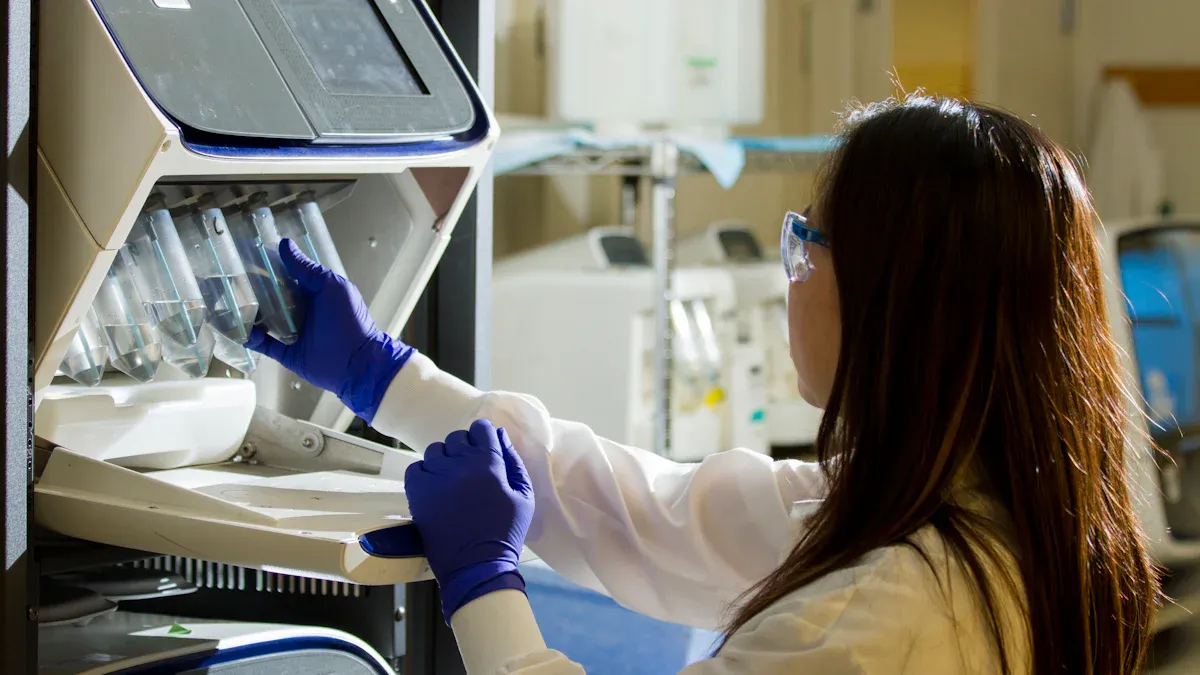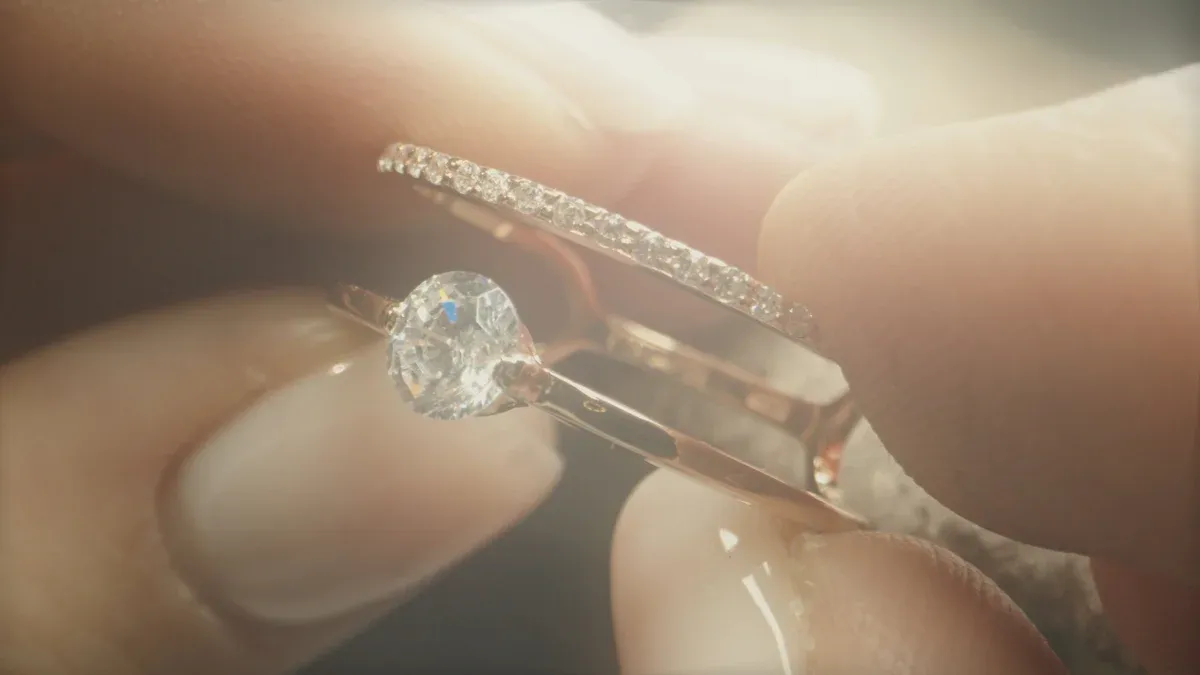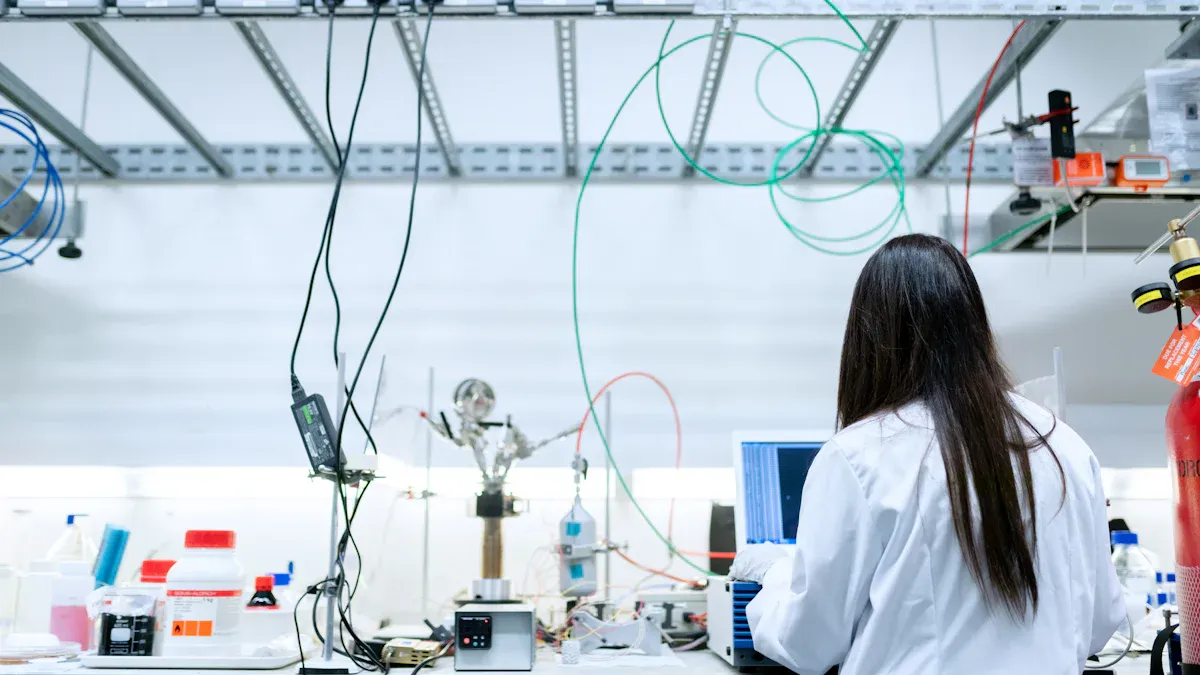How Nitinol Tubing is Crafted for Coronary Stents

Nitinol is very important for today's heart stents, especially in the context of coronary stent Nitinol tubing manufacturing. It can bend and return to its original shape, making it perfect for these devices. Nitinol tubing is both super stretchy and safe for the body. The process of manufacturing this tubing requires great care and accuracy. Each step ensures it meets strict rules for heart stent materials. Thanks to nitinol, heart stents now work better and help patients recover more successfully.
Key Takeaways
Nitinol tubing is important for heart stents because it bends and returns to shape, helping patients heal faster.
Making nitinol tubing includes strict checks to keep it safe and useful for medical treatments.
Special methods like smooth tube shaping and precise drilling make nitinol tubing strong and accurate for heart surgeries.
Surface treatments, like polishing, make nitinol tubing safer for the body and lower risks like blood clots.
New ideas, like 3D printing and adding sensors, may help make nitinol stents more custom and better in the future.
Raw Material Preparation in Making Nitinol Tubing for Heart Stents
Choosing Nickel and Titanium
Making nitinol tubing starts with picking pure nickel and titanium. These materials are needed to make strong and safe tubing. Pure nickel and titanium make the alloy tough, long-lasting, and body-friendly. These traits are crucial for heart stents, where safety is key.
Extra Low Interstitial (ELI) Nitinol is often chosen for its high purity. It lasts longer under pressure, making it great for heart-related uses. Tests check that the materials are clean and free of harmful stuff. Special tools confirm the materials meet ASTM F2063 rules. This ensures the alloy works well and is safe for medical use.
Mixing Metals to Make Nitinol
After choosing materials, the metals are mixed to form nitinol. Nickel and titanium are combined in exact amounts to get the right properties. This step is very important because small mistakes can ruin the alloy's special abilities, like bending back to shape.
The metals are melted in a vacuum or special air to avoid dirt. Careful checks make sure the alloy's structure meets medical needs. For example, tiny holes and particles are kept very small, under 5.4 μm. These details are important for the tubing to stay strong and work well.
After mixing, the alloy is tested carefully. Lasers measure the outside size, and other tools check wall thickness. These tests make sure the tubing is the right size for heart stents. Following ISO and ASTM rules, like ASTM F2633-07, proves the nitinol tubing is high quality.
Initial Shaping in Nitinol Tubing Manufacturing
Hot Working Techniques
Hot working is key to shaping raw nitinol. This process heats the alloy to high temperatures. Heating makes it easier to shape and stretch. The alloy stays strong and flexible after heating. These qualities are important for coronary stents.
The best temperature for hot working is 400°C to 550°C. This range keeps nitinol's shape memory and flexibility. Advanced tools allow faster shaping with accuracy. This step prepares the material for other processes like cutting and machining.
Tip: Keeping the right temperature is very important. It helps the tubing work well in medical devices.
Extrusion Processes
Extrusion gives nitinol tubing its basic shape. The alloy is pushed through a mold to form a tube. This step creates the thin size needed for heart stents. Extrusion also makes the tubing stronger and more even.
Special methods keep the tubing flexible and safe for the body. After extrusion, the tubing is ready for detailed shaping steps. These include tube drawing and drilling. Extrusion ensures the tubing meets strict medical rules.
Note: Extrusion reduces flaws, making the tubing reliable for heart procedures.
Precision Techniques in Nitinol Tubing Manufacturing
Seamless Tube Drawing
Seamless tube drawing is an important step in making nitinol tubing. It involves pulling a solid nitinol rod through smaller molds. This reduces its size and makes the walls thinner. Removing seams keeps the tubing strong and without weak spots. This is very important for medical use.
This method allows for very accurate control of the tubing's size. Each pull through the molds makes the tubing better. It also improves the surface, so less polishing is needed later.
Tip: Seamless tube drawing makes the tubing strong and safe for the body.
Gun-Drilling for Precision
Gun-drilling helps create the hollow center of nitinol tubing. It removes material from the solid rod to form the tube. While some material is wasted, this step is necessary for medical-grade tubing.
Gun-drilling forms the hollow part of the tubing.
It removes material that cannot be reused.
Later steps, like cold working, make the tubing more precise.
This process prepares the tubing for further shaping and heat treatment. Starting with a precise hollow core ensures the tubing meets strict medical standards. Studies show gun-drilling is key to making high-quality nitinol parts. It prevents defects and ensures the tubing is dense and reliable.
Cold Working Methods
Cold working is the last step to perfect nitinol tubing. It shapes the tubing at room temperature to improve its strength and size accuracy. Controlled pressure makes the tubing stronger and more flexible, ideal for heart stents.
Cold working also smooths the surface, reducing extra polishing needs. This step keeps nitinol's special traits, like bending back to shape. Manufacturers often use heat between steps to reduce stress and keep the tubing strong.
Note: Cold working improves strength and ensures the tubing meets medical rules.
Heat Treatment and Surface Finishing for Cardiovascular Stents

Shape-Setting and Annealing
Shape-setting gives stents their needed form. It heats the tubing to lock its shape. For example, heating Nitinol at 500 °C for 10 minutes makes it superelastic. Tests on tubing with a 2.18 mm outer diameter and 2.02 mm inner diameter confirm this. The material stays superelastic above 7.8 °C. This helps the tubing adjust to the body while staying strong.
Annealing reduces stress inside the tubing. It makes the tubing more flexible and durable. These traits are very important for stents. Careful heating keeps the tubing's ability to return to its shape after bending.
Cleaning and Polishing
Cleaning removes dirt and particles from the tubing. This step ensures the tubing is safe for medical use. Special etching methods clean leftover materials from earlier steps. This makes the tubing meet strict medical cleanliness rules.
Polishing smooths the tubing's surface. A smooth surface lowers friction and helps the tubing work better in the body. Polished tubing also reduces blood clots, making it safer for stents.
Surface Treatments for Biocompatibility
Surface treatments make the tubing safe for the body. Electropolishing removes rough spots and improves how the tubing interacts with tissues. It also stops corrosion and lowers the risk of blood clots. Studies show electropolished tubing works well in medical implants.
These treatments make the tubing reliable for long-term use. They improve how stents perform in the body, helping patients recover better.
Quality Control in Nitinol Tube Used as Stents
Non-Destructive Testing
Non-destructive testing checks nitinol tubing without causing damage. It finds problems like cracks or weak spots. These issues can make the tubing unsafe for stents.
Ultrasonic testing uses sound waves to spot hidden flaws. Eddy current testing uses electromagnetic fields to find surface problems. Both methods ensure the tubing is safe and meets medical rules. This testing keeps the tubing strong and safe for the body.
Tip: Non-destructive testing helps nitinol tubing stay reliable and flexible.
Dimensional Accuracy Inspections
Dimensional checks make sure the tubing is the right size. Even tiny size errors can cause problems in stents. The tubing must fit perfectly to work well in the body.
Tools like laser micrometers measure the tubing's size very precisely. They check the outer diameter, inner diameter, and wall thickness. These tools catch even small mistakes during production. Fixing errors early ensures the tubing works as expected.
Regular checks keep the tubing consistent and safe for medical use. Accurate sizing helps the tubing perform well in heart stents.
Adherence to Medical Standards
Medical standards make sure nitinol tubing is safe and effective. Groups like ASTM and ISO set strict rules for manufacturers. For example, ASTM F2063 lists what nitinol must meet for medical devices.
Manufacturers test the tubing at every step. They check its chemical makeup, strength, and surface quality. These tests prove the tubing is ready for stents.
Detailed records track each batch of tubing. This ensures it meets all safety rules. Following these standards guarantees the tubing is reliable for life-saving devices.
Applications of Nitinol Tubing in Cardiovascular Stents

Role of Nitinol Tubing in Coronary Stents
Nitinol tubing is very important for coronary stents. Its special traits, like bending back to shape, help stents work well. These stents adjust to changes in your blood vessels. When placed in narrow arteries, nitinol tubing opens up to keep blood flowing. This makes it perfect for surgeries with small cuts.
Here are some key ways nitinol improves stents:
Feature | What It Measures |
|---|---|
Fatigue Life | Tracks how long it lasts under repeated stress. |
Tensile Strength | Tests how much weight it can hold before breaking. |
Residual Elongation | Checks how much it stretches and returns after being pulled. |
These features show nitinol tubing stays strong under pressure. It helps stents last longer and work well in tough conditions inside arteries.
Benefits of Nitinol Stents for Patients
Nitinol stents are great for people needing heart procedures. They bend easily to fit your arteries' natural shape. This lowers the chance of problems. Nitinol is safe for the body, so it rarely causes bad reactions.
Patients heal faster because these stents need smaller cuts. They keep blood vessels open, stopping blockages and improving blood flow. Their strength means fewer repeat surgeries, making them a long-term solution.
Choosing nitinol stents gives you advanced care for your heart. These stents improve blood flow and make life better for patients.
Innovations in Coronary Stent Nitinol Tubing Manufacturing
New Ways to Make Nitinol Tubing
Ever wonder how nitinol tubing gets its amazing features? New methods have changed how it's made. Engineers now use advanced tools to make tubing stronger and more flexible. Lasers are key to shaping the tubing perfectly. With 60 lasers in use, the tubing is made with great accuracy.
Studies compare different ways to make nitinol tubing. One study shows TM-1 methods make tubing that lasts longer under stress than TM-2 methods. TM-1 is better for making strong stents that work well in tough conditions.
Manufacturing Method | Fatigue Endurance Limit (FEL) | Performance Details |
|---|---|---|
TM-1 | 2-3 times higher than TM-2 | Better under stress, similar to HP-VAR and PO VIM-VAR |
TM-2 | Lower than TM-1 | Weaker under stress compared to TM-1 |
Using Machines to Make Nitinol Tubing
Machines now help make nitinol tubing faster and better. Robots and AI handle tasks like shaping, cutting, and polishing the tubing. This makes sure every piece meets strict medical rules. Machines also reduce mistakes and improve quality.
The production scale is impressive. There are 33 lines and 500 workers making tubing. Engineers with over 100 years of combined experience ensure the tubing is made carefully and precisely.
Production Details | Numbers |
|---|---|
Total lasers used | 60 |
Manufacturing lines | 33 |
Workers involved | 500 |
Combined engineering experience | 100+ years |
Future Ideas for Nitinol Tubing
The future of nitinol tubing looks exciting with new ideas in medicine. One cool idea is using 3D printing to make custom stents. These stents fit your body better and improve healing.
Another idea is adding sensors to nitinol tubing. These sensors could check blood flow and find problems early. This helps doctors treat heart issues faster.
Eco-friendly practices are also growing. Companies recycle leftover materials to reduce waste. This saves money and makes stents more affordable for patients everywhere.
Nitinol tubing is made carefully to meet strict medical rules. Its special traits, like bending and strength, make it great for heart stents. These stents help blood flow better and support heart health.
New ways of making nitinol tubing improve its quality. These updates help stents work better and heal patients faster. As technology grows, heart treatments will keep getting better.
FAQ
Why is Nitinol tubing good for coronary stents?
Nitinol tubing bends easily and goes back to its shape. This flexibility helps stents fit arteries better. It doesn’t rust, so it’s safe for long-term use.
How does Nitinol tubing help heart treatments?
Nitinol tubing lets stents open blocked arteries with small cuts. This improves blood flow and helps patients recover faster. Its strength means fewer repeat surgeries.
Are Nitinol stents safe for most people?
Nitinol stents are safe for the body and rarely cause problems. They pass strict tests to meet medical rules, making them safe for heart procedures.
Can Nitinol tubing be made to fit special needs?
Yes, manufacturers can change the tubing’s size and shape. New methods like 3D printing make stents that fit better and heal faster.
What new ideas are changing Nitinol tubing?
Cool technologies like sensors and recycling are improving Nitinol tubing. Sensors check blood flow, and recycling lowers waste, making stents cheaper and eco-friendly.
See Also
The Process Behind Nitinol Tubing Production for Healthcare
Nitinol Tubing's Impact on Transforming Medical Equipment
The Importance of Nitinol Tubing in Minimally Invasive Surgery
The Significance of Nitinol Tubing in Modern Medicine
Nitinol Tubing's Contribution to Progress in Medical Technology

